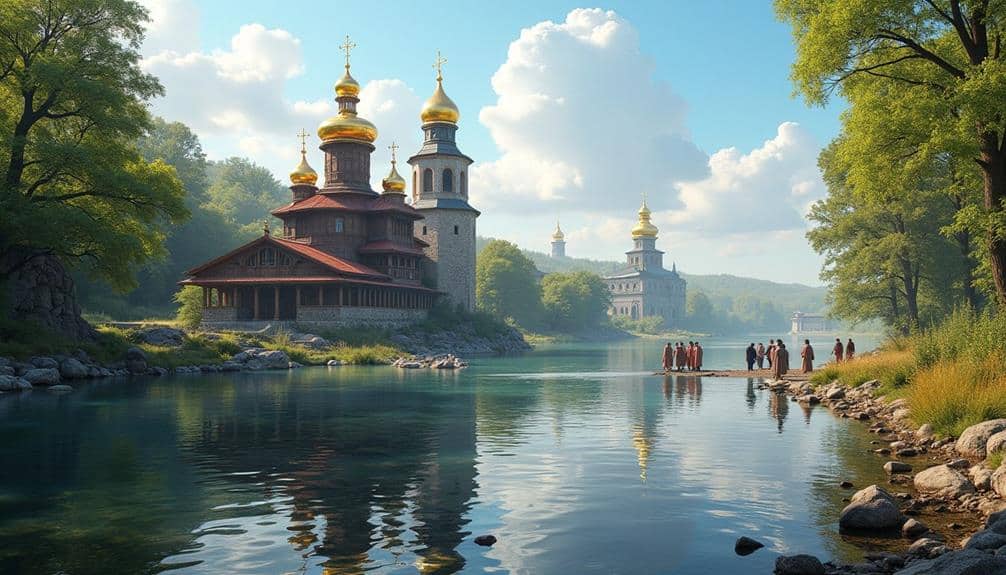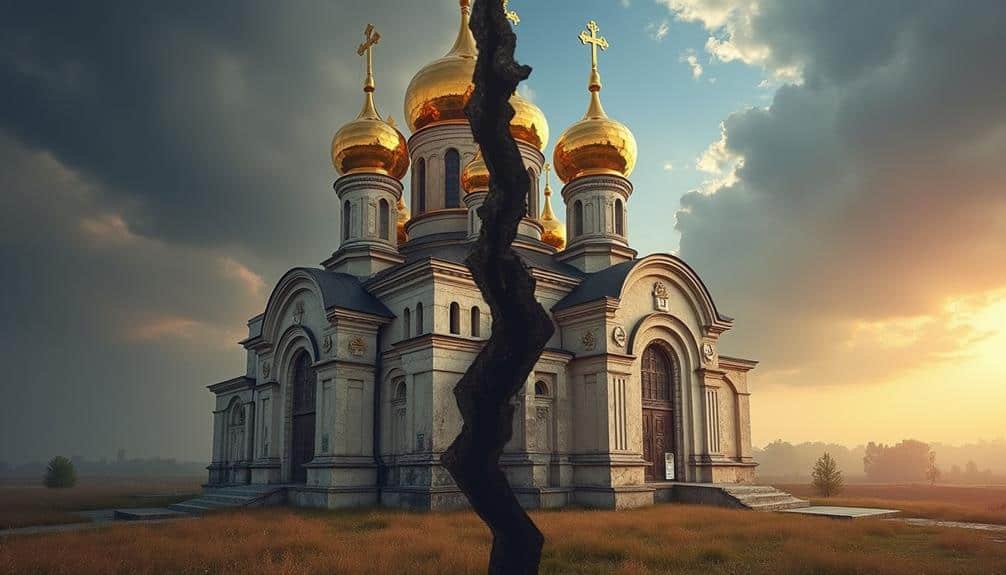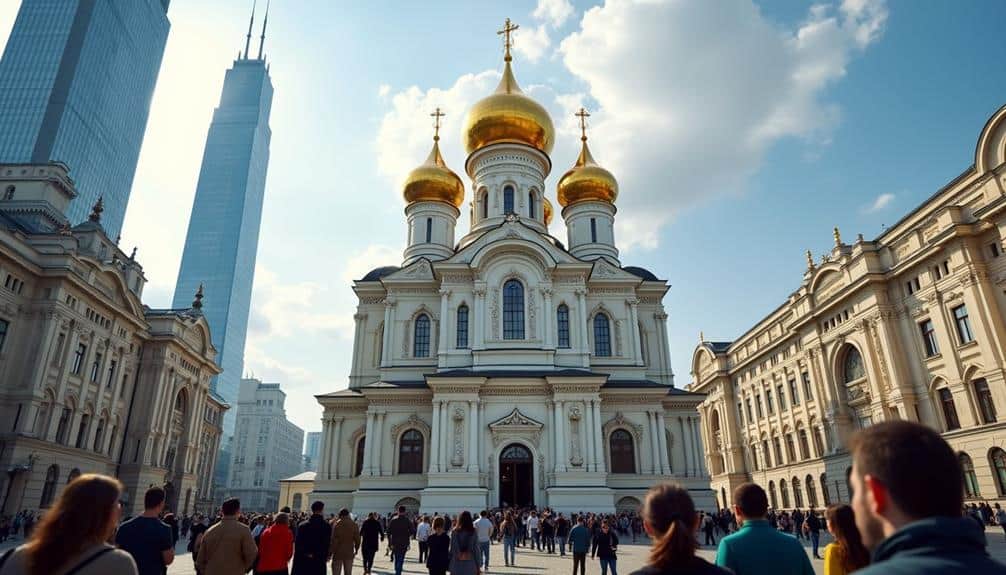The Russian Orthodox Church, with its origins tracing back to the Christianization of Kievan Rus’ in 988 AD by Prince Vladimir the Great, has undergone profound transformations shaped by historical milestones. From its early alignment with the Byzantine Empire to the pivotal Raskol schism in the 17th century, the church’s journey is marked by periods of both flourishing autonomy and severe persecution, particularly during the Soviet era. The resurgence of the church in the post-Soviet landscape presents a compelling narrative of resilience and adaptation, influencing both Russian society and the broader Orthodox Christian world. Yet, what were the pivotal moments that defined its survival and growth?
Christianization of Kievan Rus’

The Christianization of Kievan Rus’ marks a pivotal chapter in the history of the Russian Orthodox Church, laying the foundation for its spiritual and cultural development. This transformative event occurred in 988 AD when Prince Vladimir the Great adopted Christianity as the state religion.
This decision was not merely a spiritual one but also a strategic move aimed at unifying his diverse subjects and aligning Kievan Rus’ with the Byzantine Empire, a powerful ally.
The mass baptism of the population in the Dnieper River symbolized the collective embrace of a new faith, bringing with it a profound shift in societal values and norms.
The introduction of Christian teachings and the construction of churches facilitated the spread of literacy and learning, as religious texts were translated into Old Church Slavonic.
This era marked the beginning of the ecclesiastical hierarchy that would evolve into the Russian Orthodox Church, fostering a sense of shared identity and purpose among the people.
Through the Christianization of Kievan Rus’, the foundations were laid for a resilient spiritual tradition, one that would withstand centuries of political upheaval and continue to inspire a quest for freedom and enlightenment.
Byzantine Influence and Growth
Byzantine influence played an essential role in the early growth of the Russian Orthodox Church. From the moment Prince Vladimir of Kievan Rus’ embraced Christianity in 988 AD, the Byzantine Empire became a pivotal cultural and religious beacon.
Byzantine clergy, theologians, and artisans were instrumental in shaping the liturgical practices, ecclesiastical architecture, and artistic expressions of the nascent Russian Orthodox Church, fostering a profound and lasting connection that transcended mere political alliances.
The adoption of Byzantine liturgy and administrative models facilitated the Russian Church’s structural development. Byzantine missionaries and scholars translated sacred texts into Old Church Slavonic, making religious teachings accessible to the Slavic population and promoting spiritual literacy.
These translations were significant in preserving theological consistency and nurturing an informed and devout laity.
Furthermore, the architectural grandeur of Byzantine churches inspired the construction of iconic Russian cathedrals, such as the Cathedral of St. Sophia in Novgorod.
This synthesis of Byzantine artistic and theological traditions with local customs contributed to a unique religious identity that bolstered the Russian Church’s authority and appeal.
Ultimately, Byzantine influence set a foundational precedent for the Russian Orthodox Church, embedding principles of freedom and spiritual enlightenment that continue to resonate deeply within its historical trajectory.
Schism and Autonomy

Schism and autonomy marked essential moments in the evolution of the Russian Orthodox Church, redefining its religious and political landscape.
The schism of 1666-1667, known as the Raskol, was a significant event that split the church. Initiated by Patriarch Nikon’s reforms aimed at aligning Russian practices with Greek Orthodox traditions, it faced stiff resistance from the Old Believers. This division not only fragmented the religious community but also led to severe state persecution, as the autocratic Tsarist regime sought to enforce uniformity.
Autonomy, on the other hand, was a gradual process that saw the church increasingly assert its independence from external influences. The establishment of the Moscow Patriarchate in 1589 marked the beginning of this journey.
By elevating the Metropolitan of Moscow to the rank of Patriarch, the Russian Orthodox Church achieved a level of ecclesiastical self-governance that resonated with the nation’s growing political aspirations. This newfound autonomy enabled the church to play a vital role in shaping Russian national identity and culture.
These developments illustrate the church’s dynamic response to internal and external pressures, emphasizing the desire for spiritual and institutional freedom within the broader context of Russian history.
Soviet Persecution and Revival
With the rise of the Soviet Union, the Russian Orthodox Church faced unprecedented persecution that aimed to eradicate religious influence from society. The Bolshevik regime viewed religion as an obstacle to the creation of a socialist utopia. Consequently, the state confiscated church properties, closed monasteries, and executed or imprisoned thousands of clergy.
The 1922 confiscation of church valuables under the guise of aiding famine relief led to violent clashes and further repression. The 1930s saw rampant church closures and the destruction of religious icons.
However, the resilience of the faithful could not be entirely quashed. During World War II, Stalin temporarily eased restrictions, recognizing the church’s potential to bolster national morale. This fragile détente allowed for a modest revival: some churches reopened, and the Moscow Patriarchate was reinstated in 1943.
Post-war, the Khrushchev era witnessed renewed suppression, but the church continued to survive clandestinely. The enduring spirit of believers, coupled with a yearning for spiritual freedom, laid the groundwork for a more significant revival.
Modern Era and Global Influence

As the Soviet Union dissolved, the Russian Orthodox Church seized the opportunity to reestablish its authority and presence both within Russia and on the global stage. Freed from the constraints of state atheism, the Church initiated a path of revival and expansion. Domestically, it reclaimed numerous properties, rebuilt destroyed churches, and expanded its social and charitable activities.
This resurgence was bolstered by an increase in public and governmental support, positioning the Church as a central cultural and spiritual institution in Russian society.
Globally, the Russian Orthodox Church sought to extend its influence by fostering relationships with other Orthodox communities and Christian denominations. It engaged in dialogue with the Roman Catholic Church and other religious groups, aiming to promote Orthodox Christianity worldwide.
The Church also established parishes and dioceses abroad, particularly in regions with significant Russian expatriate populations, ensuring that its teachings and traditions reached a broader audience.
This modern era has also seen the Russian Orthodox Church taking an active role in international humanitarian efforts and peace-building initiatives. By leveraging its historical and spiritual legacy, the Church continues to shape not only the religious but also the cultural and geopolitical landscape, advocating for freedom and moral values globally.




